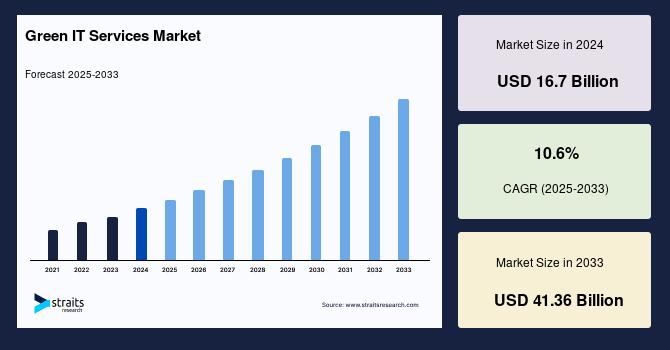Combined Heat and Power Systems Market to Grow at 4.0% CAGR Through 2035 – openPR.com

Report on the Global Combined Heat and Power (CHP) Systems Market and its Contribution to Sustainable Development Goals (SDGs)
Executive Summary
The global market for Combined Heat and Power (CHP) systems is forecast to expand from a valuation of USD 20.8 billion in 2025 to USD 30.8 billion by 2035, reflecting a Compound Annual Growth Rate (CAGR) of 4.0%. This growth is intrinsically linked to the global pursuit of the United Nations Sustainable Development Goals (SDGs), particularly those concerning energy, climate, and industry. CHP technology, by optimizing energy generation and reducing waste, serves as a critical tool for achieving enhanced energy efficiency, lower carbon emissions, and sustainable industrial development across multiple sectors.
Alignment with Sustainable Development Goals (SDGs)
The expansion of the CHP systems market is a direct contributor to several key SDGs:
- SDG 7 (Affordable and Clean Energy): CHP systems demonstrate approximately 30% greater energy efficiency than conventional power generation methods. This efficiency gain reduces fuel consumption and operational costs, making energy more affordable and sustainable. The integration of renewable fuels like biomass further supports the transition to clean energy.
- SDG 13 (Climate Action): With the capacity to reduce carbon emissions by up to 40%, CHP systems are a vital technology for climate change mitigation. Their adoption is projected to increase by 15% due to environmental concerns, directly addressing the need to combat the 37 billion tons of CO2 emitted globally each year.
- SDG 9 (Industry, Innovation, and Infrastructure): The industrial sector, which accounts for 45% of the CHP market, utilizes this technology to build resilient and sustainable infrastructure. Innovations such as microturbine CHP systems enhance scalability and efficiency, fostering sustainable industrialization.
- SDG 11 (Sustainable Cities and Communities): The long-term growth trend for CHP systems points towards increased adoption in commercial and residential sectors. This supports the development of sustainable communities by providing reliable, efficient, and lower-emission energy for buildings and district heating networks.
Market Analysis and Projections
Financial Outlook
The market is projected to generate an absolute dollar opportunity of USD 10.0 billion between 2025 and 2035. The historical growth from 2020 to 2024 was recorded at a 3.5% CAGR, indicating sustained momentum.
- Short-Term Projections (2025-2028): Growth will be primarily driven by adoption in industrial applications.
- Long-Term Projections (2029-2035): Expansion into commercial and residential sectors is expected to accelerate, aligning with SDG 11 objectives.
Segment Analysis
- By Application: The industrial segment is projected to hold a 45% market share in 2025 and grow at a 4.2% CAGR. This dominance is expected to create USD 4.5 billion in opportunities, reinforcing CHP’s role in achieving SDG 9.
- By Technology: Key technologies include gas turbines, steam turbines, reciprocating engines, and microturbines. Innovations in microturbine systems are improving scalability by 12%, making them suitable for a wider range of applications.
Regional Analysis and SDG Impact
Europe
Holding a 35% market share, Europe is forecast to lead the market with a 4.5% CAGR. This growth is propelled by strong regulatory frameworks and significant investments aimed at achieving climate and energy goals.
- Key Driver: Germany’s USD 10 billion investment in its energy transition program exemplifies the region’s commitment to SDG 7 and SDG 13.
- Regulatory Impact: The EU’s 2025 Energy Efficiency Directive is expected to increase CHP installations by 10%.
Asia-Pacific
The Asia-Pacific region is projected to grow at a 4.0% CAGR, driven by rapid industrialization and national energy policies.
- Key Driver: China’s national target to achieve 200 GW of CHP capacity by 2030 is a significant factor, demonstrating a policy-driven approach to advancing SDG 7 and SDG 9.
Challenges and Strategic Solutions
Several challenges impede market growth, but strategic solutions are available to mitigate them and advance SDG-related objectives.
Challenges
- High Initial Investment: Installation costs range from USD 1-5 million per MW.
- Regulatory Complexity: Complex regulations can affect approximately 10% of projects.
- Grid Integration: Technical issues with grid integration impact an estimated 15% of installations.
- Competition: Renewable-only systems, which can be 20% cheaper, present a competitive challenge.
Solutions
- Modular CHP Designs: These can reduce upfront costs by 10%, making the technology more accessible.
- Smart Grid Integration: Compatibility with smart grids can improve operational efficiency by 12%, contributing to a more resilient energy infrastructure (SDG 9).
- Localized Manufacturing: Establishing manufacturing in key markets like Asia-Pacific can mitigate supply chain risks.
- Policy and Incentives: Government incentives that reduce upfront costs by 20% are crucial for overcoming financial barriers.
Opportunities for Stakeholders
Stakeholders can capitalize on market growth by aligning their strategies with sustainability objectives.
- Invest in Advanced Technology: Focusing on microturbine CHP systems can improve efficiency by 15% and broaden market appeal.
- Target High-Growth Sectors: Prioritizing the industrial sector, which accounts for 45% of revenue, ensures scalability and impact.
- Ensure Regulatory Compliance: Adherence to standards such as ISO 50001 (Energy Management) and the EU ETS enhances market trust and demonstrates a commitment to sustainability.
- Strategic Market Expansion: Focusing on high-growth regions like Europe and Asia-Pacific, particularly China, unlocks significant potential.
- Develop Cost-Effective Solutions: Offering systems priced competitively can attract budget-conscious clients and expand market penetration.
Analysis of Sustainable Development Goals in the Article
SDG 7: Affordable and Clean Energy
- The article is centered on Combined Heat and Power (CHP) systems, a technology designed to improve energy efficiency and provide cleaner energy. It directly addresses the goal of ensuring access to affordable, reliable, sustainable, and modern energy for all. The text highlights that CHP systems have “30% higher energy efficiency compared to traditional power generation” and are critical for “optimizing energy use.” It also mentions the integration of renewable fuels like biomass, contributing to a cleaner energy mix.
SDG 9: Industry, Innovation, and Infrastructure
- This goal is relevant as the article extensively discusses the adoption of CHP technology within the industrial sector to build resilient infrastructure and foster sustainable industrialization. It states that the “industrial segment, holding a 45% share in 2025,” is a key driver of the market. The article also points to innovation, mentioning “innovations in microturbine CHP systems,” “R&D in energy-efficient…systems,” and the development of “smart grid-compatible systems.”
SDG 13: Climate Action
- The article directly connects the growth of the CHP market to the urgent need for climate action. A primary driver for adopting CHP technology is “increasing environmental concerns,” with the systems being crucial for “reducing carbon emissions.” The text quantifies this impact, stating that CHP systems can “reduce emissions by up to 40%.” It also references policies like the “EU’s 2025 Energy Efficiency Directive” which are designed to combat climate change.
Identified SDG Targets
-
Target 7.3: By 2030, double the global rate of improvement in energy efficiency.
- The article’s core subject, CHP systems, is a direct contributor to this target. The text explicitly states that these systems offer “30% higher energy efficiency compared to traditional power generation.” Furthermore, it mentions that innovations like microturbines and smart grid integration can improve efficiency by 15% and 12%, respectively, showcasing a clear focus on enhancing energy efficiency.
-
Target 9.4: By 2030, upgrade infrastructure and retrofit industries to make them sustainable, with increased resource-use efficiency and greater adoption of clean and environmentally sound technologies.
- This target is addressed through the discussion of CHP adoption in industrial settings. The article notes that “50% of industrial facilities” are adopting these systems to optimize energy use. The push for CHP systems in manufacturing and chemical sectors, which are high-energy consumers, represents a direct effort to retrofit industries with cleaner and more efficient technology.
-
Target 13.2: Integrate climate change measures into national policies, strategies and planning.
- The article highlights how government policies are driving the CHP market. It references specific climate-related measures such as the “EU’s 2025 Energy Efficiency Directive,” which increased CHP adoption, and “China’s 200 GW CHP capacity target by 2030.” These examples show the integration of climate action goals into national and regional strategies.
Implied Indicators for Measuring Progress
-
Indicators for Target 7.3 (Energy Efficiency)
- Percentage increase in energy efficiency: The article states CHP systems have “30% higher energy efficiency” and that innovations in microturbines can improve efficiency by “15%.” These figures can be used as direct indicators of progress.
- Rate of adoption due to efficiency gains: The text mentions that global energy efficiency investments “rose by 6%, boosting CHP demand by 10%,” which serves as an indicator of market response to efficiency improvements.
-
Indicators for Target 9.4 (Sustainable Industries)
- Adoption rate in industries: The article provides a clear metric that “50% of industrial facilities” are adopting CHP systems. The market share of the industrial segment (“45% share in 2025”) also serves as an indicator of the technology’s penetration in this sector.
- Investment in sustainable infrastructure: Germany’s “USD 10 billion energy transition investments” is a quantifiable indicator of financial commitment to upgrading infrastructure.
-
Indicators for Target 13.2 (Climate Action)
- Greenhouse gas emission reduction: The claim that CHP systems “reduce emissions by up to 40%” is a key performance indicator for climate change mitigation.
- National capacity targets: “China’s 200 GW CHP capacity target by 2030” is a specific, measurable, and time-bound indicator of a national climate strategy.
- Impact of regulations: The “EU’s 2025 Energy Efficiency Directive” is noted to have “increase[d] installations by 10%,” providing a metric to evaluate the effectiveness of climate policies.
Summary of Findings
| SDGs | Targets | Indicators |
|---|---|---|
| SDG 7: Affordable and Clean Energy | Target 7.3: Double the global rate of improvement in energy efficiency. |
|
| SDG 9: Industry, Innovation, and Infrastructure | Target 9.4: Upgrade infrastructure and retrofit industries to make them sustainable and increase adoption of clean technologies. |
|
| SDG 13: Climate Action | Target 13.2: Integrate climate change measures into national policies, strategies and planning. |
|
Source: openpr.com

What is Your Reaction?
 Like
0
Like
0
 Dislike
0
Dislike
0
 Love
0
Love
0
 Funny
0
Funny
0
 Angry
0
Angry
0
 Sad
0
Sad
0
 Wow
0
Wow
0



























;Resize=805#)


















































